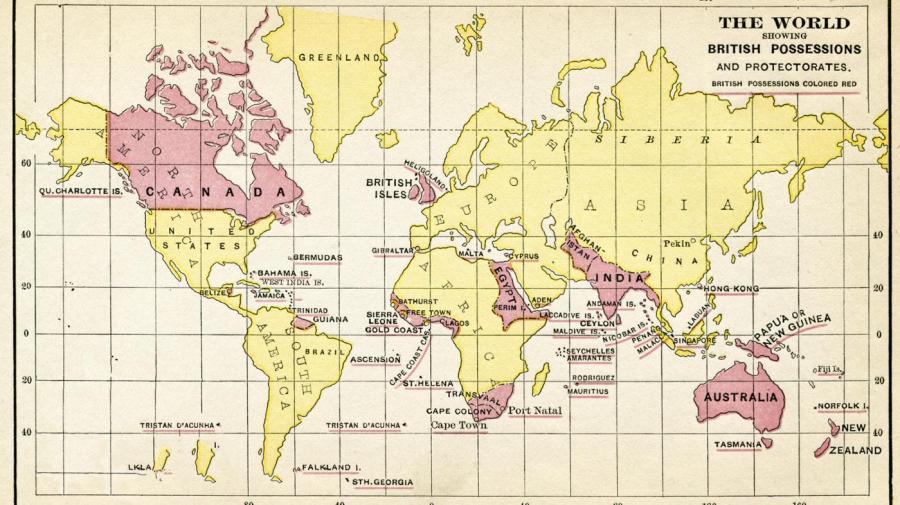What Were the Countries of the British Empire?

The British Empire held Canada, Australia, New Zealand, Tonga, Fiji, Western Samoa, India, Burma, Papa New Guinea, Malaya, Sarawak, Brunei, Oman, Iraq, Egypt, Libya, Sudan, Kenya, Uganda, Northern and Southern Rhodesia, Tanganyika, Zanzibar, Mauritius, the Maldives, South Africa, Swaziland, Nigeria, Gold Coast, and Sierra Leone, among other countries during its reign. It has also held a portion of the present day United States and China.
Over the course of Britain’s existence, the country has invaded nine out of 10 of the world’s countries, or all but 22 of them in total. At its peak, the British Empire was composed of about one-fifth of the entire world’s population and covered about a quarter of the world’s total land mass.
The empire spanned from the 16th century, when Britain began colonizing the Americas, to the present day where Britain retains sovereignty over 14 external territories. 53 states are also voluntary members of the Commonwealth of Nations and continue to recognize England’s royal family as the heads of state. A trend of decolonization began after World War II, with many countries gradually becoming independent. Prince Charles regarded the return of Hong Kong to China in 1997 as the informal end of the British Empire.





